
Contributed by Lisa Viazanko, Vice President and CTO of Industrial, Commercial Transportation, TE Connectivity
The promise of fully autonomous on-highway vehicles has enthralled manufacturers, consumers, and the media alike. The world awaits a future where trucks, buses, and emergency vehicles can be operated entirely by automation and respond to ever-changing environmental and traffic conditions. The market for automated trucks and buses is expected to grow to 1.2 million vehicles by 2032, or 19% of the total market. China will lead the way in the adoption of autonomous commercial vehicles, with a 38.5% share, followed by Europe and North America with 29% and 26% share, respectively.
In this brave new world, fully autonomous commercial vehicles will operate on a 24/7 basis: overcoming driver shortages and fatigue, smoothing out traffic, and reducing gridlock and accidents. Fleet operators will be able to handle more cargo, driving more revenues while reducing the total cost of ownership of trucks by 45%.
Commercial vehicles will be able to sense and respond instantly and seamlessly to traffic light changes, congestion on roads, heavy rain and snowfall, pedestrians, and more. In addition, automated trucks, buses, and emergency vehicles won’t be prey to unsafe drivers who take unnecessary risks, such as failing to signal, making unexpected lane changes, weaving in and out of traffic, and suddenly stopping. Since 94% of vehicle accidents are due to driver distraction or error, traffic injuries, and fatalities will ultimately plummet.
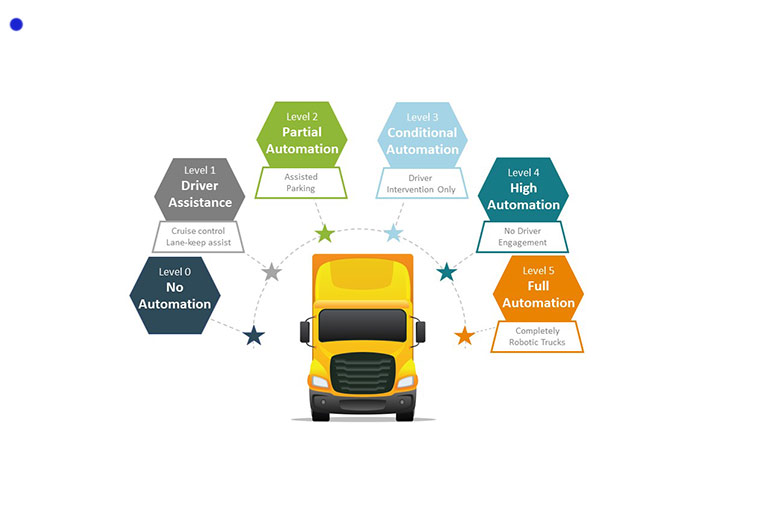
So, where are we headed and what can commercial vehicle makers and logistics operators expect from their original equipment manufacturer (OEM) and component manufacturer partners? After all, investors have made more than $330 billion in investments in automation, connectivity, electrification, and smart mobility (ACES) companies since 2010, with more than a third going to autonomous vehicle technologies. Why haven’t manufacturers deployed fully autonomous commercial vehicles on the road yet?
Progress toward reaching Level 5 automation
Automated vehicles are rated on a scale of Level 0, or no automation, to Level 5, or full automation. Currently, the on-highway vehicle industry is at Level 2, or partial automation. Drivers benefit from technology such as advanced driver assistance systems (ADAS) which help them maneuver and park oversized commercial vehicles.
Commercial vehicle manufacturers are also borrowing best practices from auto manufacturers, which are leading in innovation thanks to significant funding in the space. Auto manufacturers such as Tesla and General Motors offer automated driving functionality that’s classified as Society of Automotive Engineers (SAE) Level 2 in the U.S., while Mercedes-Benz has achieved approval in Germany in 2022 for Level 3 automated driving and is the first carmaker to achieve approval in Nevada USA to deploy cars with Level 3 automated driving. Pony.ai has launched robo-taxis in China that have a safety driver monitoring service, while Waymo and Cruise are about to do the same in San Francisco.
With so much investment and innovation, it’s likely that Level 5 automation for both on-highway and passenger vehicles will be achieved this decade. Industry watchers believe that fully autonomous trucks will lead the way, as highway driving is easier to master than the unpredictable urban and suburban driving conditions experienced by route vehicles such as buses and passenger vehicles. In addition, the expected 45% reduction in total cost of ownership for autonomous trucks more than justifies the investment in the higher level of computing, AI, and sensor performance, removing cost as a barrier to adoption.
Addressing technical obstacles to deploying automation at scale
There are numerous technical obstacles that must be overcome before manufacturers can gain regulatory approval for fully automated commercial vehicles and produce and deploy them at scale. These challenges include:
- Aligning electrification and automation objectives: Commercial vehicles are electrifying at a fast pace. Vehicle manufacturers want to future-proof their businesses, while fleet operators want to pivot away from using fossil fuels and reduce energy costs. There are multiple paths forward to electrifying commercial vehicles, including developing conventional hybrids, plugin hybrids, battery electric vehicles, and hydrogen fuel electric vehicles.
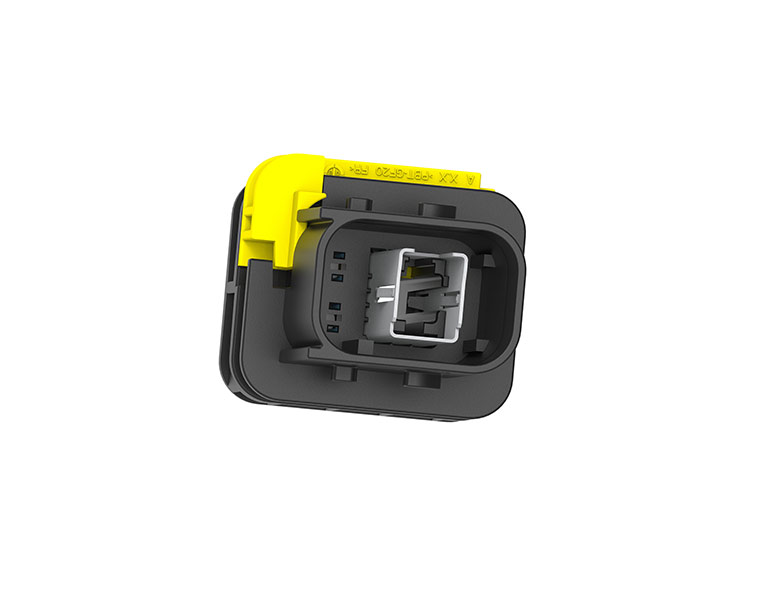
All of this means that more technology, including high-voltage equipment, is now going under the hood of vehicles, which is why component manufacturers are miniaturizing systems where possible. One strategy is to co-locate power and data transmissions in a hybrid connector that uses electromagnetic shielding. By doing so, commercial vehicle manufacturers can minimize space while enabling the side-by-side location and transmission of electrical current and highspeed data signals.
- Ensuring pervasive communications: Each autonomous vehicle will be packed with technology, including sensors, connectivity, and artificial intelligence. Trucks, buses, and emergency vehicles collect data from multiple devices, including RADAR/LiDAR, cameras, antennas, displays, and telematics. This technology will ultimately capture vast amounts of data at the rate of more than 25 gigabits per second. The industry will evolve from powering in-vehicle communications governing systems like ADAS to enabling vehicle-to-vehicle (V2V) communications and vehicle-to-everything communications (V2X). Achieving this vision is some years ahead. Automation and artificial intelligence need to process data in real time, enabling vehicles to react to changing road conditions and the actions of other vehicles. That’s a lot more challenging for commercial vehicles, which can’t react as quickly as much smaller passenger vehicles. So, suppliers of connectivity and sensor solutions will need to consider the physics of key processes, such as unexpected braking, and recalibrate commercial solutions to react faster to enable preventative actions.Currently, many commercial vehicles use CAN networks that transmit data at slower speeds. As a result, automobile, OEM, and component manufacturers are working on developing new Ethernet standards that will enable ultra-fast communications in harsh environments. The 100 BASE-T1 and 1000 BASE-T1 Ethernet protocols can transmit high amounts of data using an unshielded twisted pair, compared to only 400 kB with CAN and 1 MB with CAN-FD. Meanwhile, the automotive ethernet is at 25 Gbps and will reach 100 Gbps very soon. Commercial vehicles typically require 1000BASE-T1bp Type B, which provides a longer channel length that accommodates the longer distances between systems like cameras and displays in commercial vehicles. Next-generation architectures will use a mix of CAN and Ethernet protocols, aligning them to the functionality they support.
Systems and devices are interconnected via onboard networks that enable data transmissions at high speeds. Data is then processed via one or more electronic control units to create a real-time view of vehicle performance and conditions and the surrounding environment. Ethernet connectors help enable data connectivity by providing wire-to-wire connections supporting digital services and operations, such as multifunction displays, telematics, telemetry units, infotainment modules, and media access controllers. They are sealed to ensure flawless performance with heavy-duty usage and have secondary locking to ensure contact retention.
- Operating in harsh environments: Commercial vehicles must withstand punishing operational and environmental conditions. They may operate around the clock for years on end, must withstand vibration and shock, and often operate in environments characterized by extreme temperatures ranging from -40°C to 125°C, dust and gravel, moisture, and the presence of corrosive fluids. Finally, tractors and trailers may be connected and unconnected frequently, which is hard on connector solutions. Component manufacturers are developing solutions, such as rugged connectors that can withstand these operating and environmental conditions and can be serviced in the field to get vehicles up and running again. Connectors with low insertion force can handle more wear and tear, such as trailers being connected and disconnected constantly, while still preserving data connectivity.
- Gaining regulatory approval to deploy new functionality: Commercial vehicle manufacturers and technology providers are testing new functionality such as automated lane changing in controlled environments, to test and learn how vehicles perform and solve issues prior to seeking regulatory approval. They’re learning from passenger vehicle trials which are now happening globally. Commercial vehicle manufacturers want to know that technology is safe and works effectively before deploying automated capabilities at scale. They need to ensure regulatory and public acceptance of new systems, while technology providers want to avoid the liability of accidents occurring due to unproven systems.OEM and component manufacturers who develop products according to the latest standards and best practices can help commercial vehicle manufacturers meet exacting regulatory requirements.
Selecting the right partners for the journey ahead
Commercial vehicle manufacturers have invested hundreds of millions of dollars in researching new technology, developing next-generation architectures, and testing solutions. Teams at these leading companies want to work with partners that have the demonstrated expertise, breadth of solutions, and global manufacturing expertise to help them close the last mile of autonomous driving.

Leading component manufacturers can provide the full breadth of sensors, antennas, connectors, cable assemblies, and data connectivity required for autonomous capabilities. They offer both standardized and customized solutions to meet customer needs. If customization is required, component manufacturers can use 3D printing and injection molds to fabricate customized connectors and also provide wire harnesses for customer testing. Being able to do so at pace enables commercial vehicle manufacturers to maintain their desired pace of innovation.
Component manufacturers must meet customer requirements for:
- Increasing safety: Providing solutions that offer extreme reliability and responsiveness amidst changing conditions.
- Enabling greater productivity: Delivering the full range of solutions that enable greater automation of commercial vehicles so that operators can run them 24/7 to increase delivery throughput.
- Improving sustainability: Providing solutions that support vehicle electrification; reduce componentry weight; and use sustainable, affordable resins, materials, and processes.
- Creating a connected world: Those component manufacturers that run diversified businesses can bring insights, best practices, and solutions from other divisions, such as energy, engines, infrastructure, and passenger vehicles to bear on innovating solutions for commercial vehicle manufacturers.
Commercial vehicle manufacturers and their partners have created a solid foundation for the development of autonomous vehicles. They’re solving challenges around electrification, component miniaturization, data connectivity, and performance in harsh environments that will unlock faster innovation in the years to come.
Within the next decade, commercial transportation will increasingly become autonomous, unlocking new business gains for manufacturers and operators while contributing to a safer, more sustainable world for all of us.

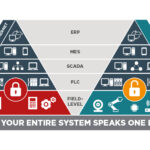

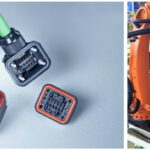
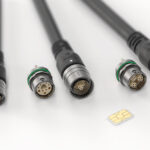
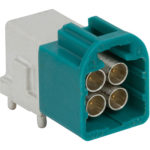
Leave a Reply
You must be logged in to post a comment.